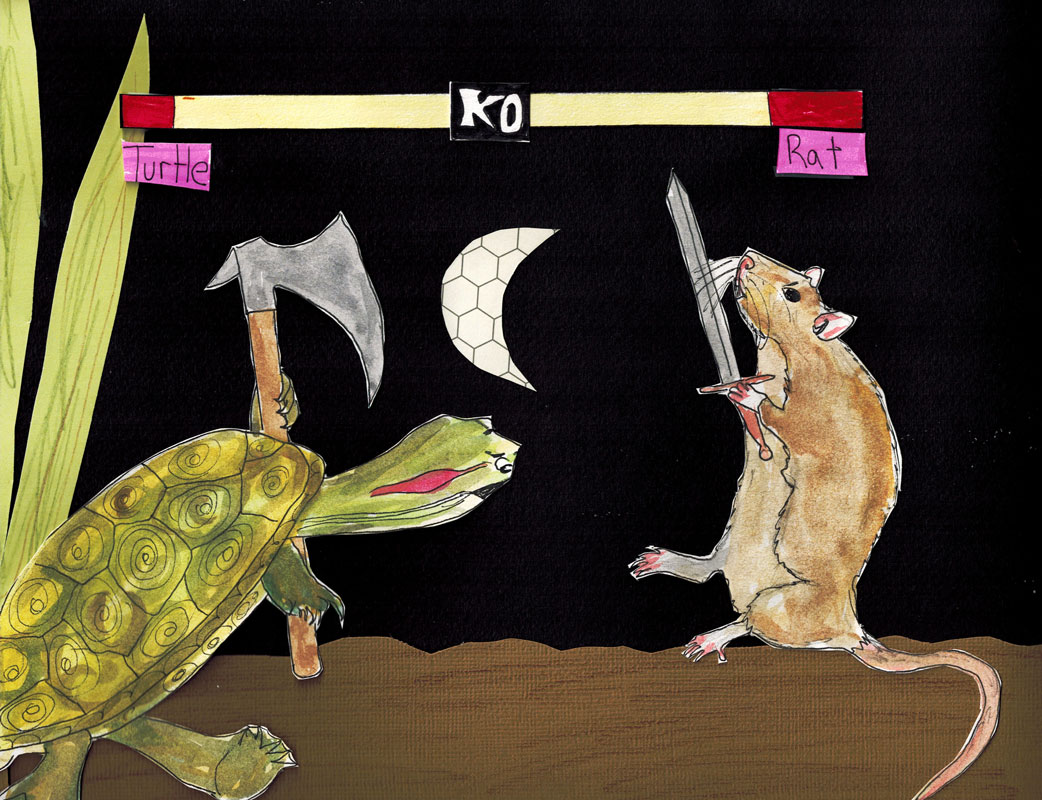Imagine you’re out for a walk in the woods and you happen upon an attractive mate; after copulation, your partner promptly bites your head off and eats it, then proceeds to devour the rest of your body. OK, maybe don’t imagine that — it’s pretty gruesome and offensive — but it’s a reality that many an arthropod (insects, spiders and other invertebrates with a segmented body and a hard exoskeleton) faces on a daily basis.
It’s an act called “sexual cannibalism,” and although it may not be the oddest mating behaviour to occur in the natural world — female hyenas have pseuodo-penises which act as receptacles for the male penis — it’s certainly high on the list.
In the summer of last year, I watched the strangeness of insect cannibalism unfold before my very eyes — on a shoe, of all places. Although not a case of sexual cannibalism as far as I’m aware, the female dragonfly did perform the characteristic post-coital decapitation. It reminded me of the finishing move of the praying mantis. First a male praying mantis entices its mate by flapping its wings and swaying its abdomen, then it leaps on her back and begins to mate. After the deed is done, the female, in an act of supreme gratitude, decapitates and devours of the male mantis’ head.
Although successful copulation in mantises can occur without decapitation, one wonders how such a behavior evolved into such prominence. Some studies suggest that the added food ingested by the female will allow it to devote more energy to egg production. This would have a selective advantage for both parents as it would increase the likelihood that the offspring will come to term, and thus their genes will be passed on. However, it seems that males may not be complicit in their decapitation, and there would be a greater evolutionary advantage for them if they survived to mate with another female.
In the Sphodromantis lineola species of praying mantis, the likelihood of sexual cannibalism is dependent upon the hunger state of the female. Regardless of the intensity of the courtship display, in captivity, if the female was starved prior to the male being introduced into its cage, the male was going to lose his head. However, when the female S. lineola was recently fed, the opposite was true and the male escaped unscathed. While a lot of data has been collected in a laboratory setting, similar behaviour patterns have been witnessed in natural settings.
Despite the reluctance of praying mantises to lose their heads, some arthropods willingly face the gruesome prospect of death during or after sex. The Australian redback spiders (Latrodectus hasselti, as featured in the science section’s own “Zoological investigations,” Sept. 16, 2009) somersault themselves so their abdomen is aligned with the female’s fangs during copulation. A study conducted by Maydianne Andrade and published in Science found that 11 of 17 observed matings of L. hasselti resulted in the death of the male redback. As with the praying mantis, the hunger level of the female spider may have been the deciding factor in the male’s survival.
The sexual suicide of the male redback spider does not appear to be influenced by any specific behaviour of the females, but rather is thought to be a complicit act that confers a selective advantage for the males. Two main reasons led Andrade to this conclusion: firstly, the cannibalized male fertilized just over twice as many eggs as one that survived copulation; secondly, after the female cannibalized their partner, the likelihood that the female would mate again was slimmer. These two reasons, coupled with the short life span, and the fact that males rarely leave the webs of their mates after copulation even though a second mating is not likely to occur, make a good case for the benefits of sexual cannibalism, at least in the Australian redback spider.
Sexual cannibalism is not the norm among arthropods, and is rarely observed outside the phylum Arthropoda, but when it is observed we are offered a fascinating, if not disturbing, glimpse into the sexual lives of our non-human co-inhabitants of this amazing planet.




